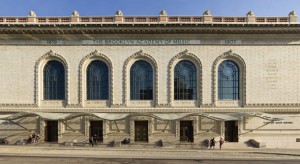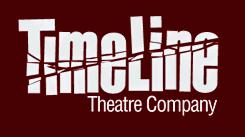Trudel | MacPherson
This is the question we asked arts groups across the country in Fall 2013, refreshing our national landmark survey of 2011. With the digital communications landscape evolving at light speed we wanted to track challenges, leadership attitudes, measurement strategies and 2014 investment plans to update our study of practice and perceptions of the effectiveness of digital communications in the arts field. For arts organizations social media can be a highly effective, not-so-secret weapon to share content with the public, build audiences, fundraise and create community – especially with younger constituents. Trudel | MacPherson, in partnership with Neuer Media, devised a comprehensive survey to benchmark current social media investment, attitudes and evaluation by arts organizations of all sizes and across all disciplines. Arts practitioners from all across the country completed our survey. Responses show broad adoption and rising confidence and sophisticated use of online and social tools. Survey respondents demonstrate heightened appreciation of the value of digital communications and dynamic social media interactions with audiences, followers and fans. Several interesting patterns emerged:
Arts Organizations Have Become Social Media Native Speakers
Digital outreach is more fully integrated into communications outreach at the majority of organizations surveyed. Only 7% of respondents see resistance to devoting staff time and communications budgets to social media and most groups plan to spend the same or more on digital communications in 2014. Management excitement remains high at 70% and most groups – 84% — believe their efforts are effective. This is a solid improvement over our 2011 findings. Online communities are thriving, live events are successfully connecting in-person and online activities and more than 40% of groups report progress with ticket sales via social media. Mobile technology is becoming mainstream with more than 54% of groups reporting use of mobile options for ticket sales and more than 70% using social check-in tools. And audiences are responding!!! More than 95% of groups report positive responses to social media outreach – up from 85% in 2011.
Tried and True Platforms
Our research shows a robust embrace of social media’s classic platforms like Facebook (used regularly by more than 92% of respondents,) Twitter (@55%) and YouTube (@40%). There’s a great deal of buzz around Instagram and Pinterest but only 19% use Instagram regularly and only 12% use Pinterest. Tumblr and Google+ remain niche networks. Email is ubiquitous as are social components on organization’s websites.
Management attitudes
Management attitudes remain positive with 70% of respondents excited about using social media but many report outside pressure with more than 50% noting “our audience expects it of us.” More than 25% remain “daunted by the technical aspects” of managing digital communications across various platforms. Efforts to refocus goals and determine which platforms deliver the best return will be crucial to overcome this challenge. Management comfort levels have been rising and fully 75% of organizations now encourage staff to use digital and social media on their own to promote their organizations. Trust is trumping control with more than 85% of groups agreeing to relax management control over social media content vs 73% in 2011. Responsibility is centered in marketing/communications at more than 80% of groups, up from just 62% in 2011. However, internal policies are lagging behind effective social media practice, with only 35% of groups agreeing or strongly agreeing about having consistent policies.
Future Investment Plans
Only 2% of arts groups plan to spend less on social media and digital communications in 2014. More than 57% plan to spend more and 41% plan to keep spending level. We believe this is strong indication that social media will remain a fixture in the marketing toolkit of arts organization nationwide. To build management appetite for increased investment, we recommend arts organizations follow the advice in the Networked Nonprofit with Do-It-Yourself social media experiments to test new ideas. Making small “bets” and urging funding for those that work is a winning strategy.
Greatest Challenges
Time remains a challenge for more than 80% of respondents. It appears to be an even greater hurdle to adoption than expertise (only 50% reported lack of expertise as a problem) or budget (reported at 52%). On a positive note, fewer than 10% of arts organizations report issues with management buy-in or trust. Only 6% of groups reported management thinks social media is overpromising and under-delivering. Though marketers are reporting growing management trust in staff digital outreach, we continue to see a tug of war between promotion and engagement played out in social media. As noted in the Networked Nonprofit, social media should be a conversation – not a sales pitch — groups should focus less on growing themselves and more on cultivating their networks. Successful arts groups will concentrate on building community, developing followers and fans, and turning them into advocates and patrons.
Social Media is Becoming a Two Way Street and Experimentation is Flourishing
Encouragingly, 60% of groups report making changes based on audience feedback up from less than half in 2011. Outreach targets have narrowed. Local adults continue to dominate as primary targets of more than 80% of groups. Donors are primary targets at more than two thirds of groups and tourists are being targeted slighted more than in 2011. Digital communications are up overall by more than 10% across all categories. Previews of upcoming programming are making the most noise with 98% of groups. Other hot social media topics are social in-person opportunities to engage at 79% — up from only 63% in 2011. Background on programming is the third most popular communique at 77%, followed by giving opportunities at 71%. Emerging topics and experiments abound with sweepstakes, contests and giveaways being tested by more than 48% of organizations responding.
More Nuanced Measures are Evolving
Qualitative measures—web analytics, fan/follower counts and email tracking — are ubiquitous and virtually unchanged from 2011. More groups are probing engagement as well as visitations – with tracking of online surveys, coded offers and viral sharing up slightly. However, tracking of brand mentions is only at 17% and conversion tracking scores are also surprisingly low at 19%. Groups are missing chances to track which channels convert best to optimize outreach, content and platform choices.
The Bottom Line: Overall Results are Up Across the Board
Groups are reporting improved results across all outreach categories: ticket sales, fundraising, developing online communities and building participation in live events success measures are up 5-10% from 2011 numbers. And many more groups report social media have delivered major results or have become mission critical to their efforts:
- Ticket sales – 15%
- Fundraising – 6%
- Developing online communities – 20%
- Building participation at live events –16%
Crowdsourcing and crowdfunding which were outliers in 2011 have developed strong followings. More than 45% of groups report positive results with crowdsourcing. And almost 30% say crowdfunding experiments are delivering for them.
We Welcome You Into the Discussion
Our 2013/14 study shows that social media has become essential to effective arts marketing. Please give us your thoughts on any of the findings of our research in the comment section below or contact us by email.
Download our summary presentation.
Read MoreTaking Audiences on Journeys of Discovery – Creating Cross Discipline Partnerships to Enrich Engagement
One of the most frequently asked questions Rory and I hear from arts marketers is “How can we attract audiences that are totally new to our organization?” It seems to us that organizations have gotten better at drawing current audiences – the “low hanging fruit” – back to attend additional events but brand new patrons are elusive. Some of the most exciting approaches we’ve seen are Carnegie Hall’s annual festivals– once a year citywide cultural feasts which bring together a range of performances and events at dozens of partner organizations throughout New York City around a compelling theme. The festivals – now in their seventh year – are working to energize current audiences and attract brand new audiences to the most traditional of settings.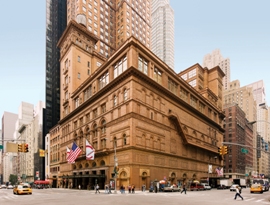
Imagining a New Artistic Paradigm:
In 2005 when Clive Gillinson left the London Symphony to head Carnegie Hall, he brought a collaborative temperament and a fascination with the possibilities New York City’s cultural colleagues could offer. He began to imagine what could be achieved by taking a holistic view of the city’s artistic opportunities surrounding arts and culture. His goal was to build on Carnegie Hall’s 122 year tradition of presenting great musicians from around the world by providing a broader context for audiences -curating compelling journeys of discovery by providing rich cultural content around the music. He sought to present performance in a new way, using the artistic assets of NYC’s cultural community to enrich audience experiences, inspire artists, unlock the creativity of his staff and ignite the imaginations of the city’s cultural communities and citizens.
Placing music at the core of the festival, the cross departmental Carnegie Hall team began with the planned 2007 residency of the Berlin Philharmonic and explored the possibilities of placing the scheduled performances in a broader context of Berlin’s robust arts and culture scene. The team expanded the performing lens to look at Berlin as a cultural incubator, and decided to recreate its dynamic arts scene for New Yorkers and visitors with the first Carnegie Hall citywide festival. Carnegie Hall – acting as an artistic catalyst and engagement impresario – reached out to visual arts, cultural, community, literary, film and even other presenting organizations, to make Berlin come alive with events occurring all over town for 3 weeks in 2007.
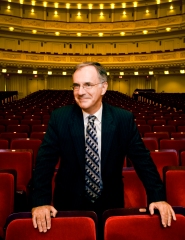 Mr. Gillinson explains the revolutionary concept: “In fall 2007, we added a new dimension to Carnegie Hall’s programming mix with our first citywide festival, Berlin in Lights, a three-week celebration exploring the vibrant arts scene of the German cultural capital with more than 50 events at Carnegie Hall and leading arts organizations throughout New York City.”
Mr. Gillinson explains the revolutionary concept: “In fall 2007, we added a new dimension to Carnegie Hall’s programming mix with our first citywide festival, Berlin in Lights, a three-week celebration exploring the vibrant arts scene of the German cultural capital with more than 50 events at Carnegie Hall and leading arts organizations throughout New York City.”
“At the time, Carnegie Hall had long been known for presenting incredible performances by the world’s finest artists of all musical genres as well as some shorter series. With Berlin in Lights and the other major festivals that we’ve since offered annually each season, our goal has been to build on this tradition to develop larger journeys of discovery for audiences. We’ve worked with the many wonderful partner organizations throughout the city to create extensive specially-curated series of events that explore compelling themes, spanning all aspects of arts and culture,” said Mr. Gillinson.
Berlin in Lights created a Renaissance of collegiality and collaboration in New York City and was the first in a series of annual festivals, bringing audiences, organizations and artists together around cross cutting themes. Carnegie Hall will launch its 7th festival in Winter 2014, focusing on VIENNA: City of Dreams in collaboration with the Austrian Cultural Forum New York, the Frick Collection, The Morgan Library, the Museum of Modern Art, The Paley Center for Media, The Julliard School, Neue Galerie and Le Poisson Rouge, among other leading NYC institutions.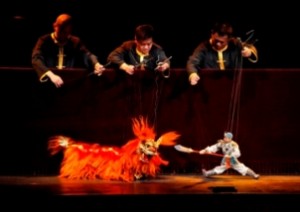
Objectives/Results:
The overall audience development goals of the festival programming at Carnegie Hall are to draw its traditional subscription and single ticket audiences to new experiences and to attract new audiences to Carnegie Hall’s programming.
The programming of music as part of a larger artistic journey also serves to create a mobilizing “event” to draw media attention and focus staff and partner energies around something bigger than just another concert or series of concerts. “We want our current subscribers to be surprised and intrigued,” stated Naomi Grabel, Carnegie Hall’s Director of Marketing, “and to create a compelling reason for new audiences to give us a try.”
And it works!! In a time where we’re hearing that subscriptions are dying and audiences are turning away from traditional art forms – especially classical music – Carnegie Hall reports than more than one third of audiences who buy a ticket to a festival performance are NEW to the organization. And even more tellingly, 10-15% of attendees who came to Carnegie Hall for a festival, return to hear/see something else during the rest of the year.
“It gives us a way to penetrate the busy lives of over scheduled New Yorkers and visitors by creating a focused cultural journey which engages a variety of artistic appetites,” stated Synneve Carlino, Director of Public Relations. “And it inspires our staff to work together across departments to creatively market and promote our festivals.” In recent summers, Carnegie Hall has tried new ways to spread the word about its festivals to targeted audiences, for example, launching street teams at summer festivals to reach Latino New Yorkers in advance of 2012’s Voices from Latin America festival and traveling to the annual Dragon Boat Festival in Flushing, Queens to promote its China themed festival in 2009. ”We want to engage with people who may not be aware of Carnegie Hall and tell them about a range of programming that they might enjoy.”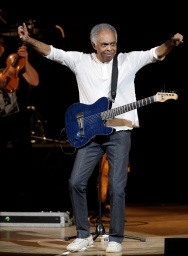
A Frame Not a Formula – Making it work:
The realities of making collaboration work call for imagination, flexibility and sensitivity throughout planning and execution. As Naomi Grabel says: “We don’t take a cookie cutter approach, each festival is unique and calls for fresh thinking about design, collaboration and promotion.”
Some of the key ingredients to success include:
- Advance planning – speaking with major partners 2-3 years in advance about important artistic programming initiatives at Carnegie Hall – such as building on the 2014 planned seven performance schedule of the Vienna Philharmonic to create the Vienna: City of Dreams festival.
- Working with leading artists to build programming around themes such as Jessye Norman who imagined the 2009 Honor! A Celebration of the African American Cultural Legacy festival and Carnegie Hall Debs composer chair, Osvaldo Golijov, an artist who provided key advice for the Voices from Latin America festival in Fall 2012.
- Responding to milestones of mutual interest to partners such as the joint celebration, with the New York Philharmonic, of the 90th anniversary of Leonard Bernstein’s birth and the 50th anniversary of his appointment as the Philharmonic’s music director with Bernstein: The Best of All Possible Worlds in Fall 2008.
- Being sensitive to partners’ unique personalities by encouraging them to present a wide range of offerings within the festival theme.
- Keeping collaborations simple by letting each partner take responsibility for ticketing, fulfillment and individual promotion for their own performances.
- Building promotional assets useful to all partners and accessible to all audiences, including a micro web site, sharable signage, background video, ads, brochures, etc.
- Connecting all internal resources – creating a cross-departmental Carnegie Hall team for each festival with artistic, marketing, development, ticketing and education staffers on board.
- Respecting and celebrating the culture highlighted – approaching target constituencies such as the Latino audience for the Voices from Latin America festival or the Chinese-American community for the Ancient Paths, Modern Voices: A festival Celebrating Chinese Culture (Fall 2009) with appropriate media outreach, bilingual materials and timing.
And the result is a series of annual events that create a cultural feast for New Yorkers and visitors. As Mr. Gillinson says, “We hope that Carnegie Hall festivals will tempt audience members to go beyond single performances or the offerings that they already know and love. We want to inspire them to try new things, exploring interesting themes, painted across a wide cultural canvas.”
Read More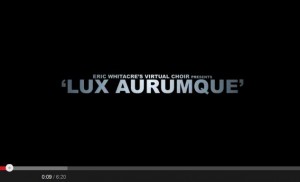 Trudel | MacPherson has listened to complaints about disappearing audiences for classical music and we suggest learning from the amazing work of our favorite crowd-sourcing pioneer, Eric Whitacre. Already the most popular choral composer working today, Whitacre has pushed the classical music envelope by inviting thousands of choristers from all over the world to join his virtual choir – splicing individually recorded parts into one video. Check out the results out on one of YouTube’s most popular posts http://www.youtube.com/watch?v=D7o7BrlbaDs
Trudel | MacPherson has listened to complaints about disappearing audiences for classical music and we suggest learning from the amazing work of our favorite crowd-sourcing pioneer, Eric Whitacre. Already the most popular choral composer working today, Whitacre has pushed the classical music envelope by inviting thousands of choristers from all over the world to join his virtual choir – splicing individually recorded parts into one video. Check out the results out on one of YouTube’s most popular posts http://www.youtube.com/watch?v=D7o7BrlbaDs
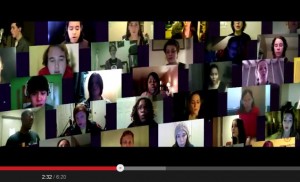 Whitacre has inspired millions via his new approaches to audience engagement, making audiences participants in the creative process. We’re studying the key aspects of effective crowdsourcing and suggest an approach that engages by making the engagement matter. Our new crowdsourcing framework – Making It Matter—focuses on three basic rules:
Whitacre has inspired millions via his new approaches to audience engagement, making audiences participants in the creative process. We’re studying the key aspects of effective crowdsourcing and suggest an approach that engages by making the engagement matter. Our new crowdsourcing framework – Making It Matter—focuses on three basic rules:
-
Make it Matter
-
Make it Easy
-
Make it Fun
We suggest encouraging visitors to an organization’s website to help make a difference and serve the common good, while enjoying the competitive/collaborative process of participating. Here are a few examples we think are interesting and effective:
The New York Public Library (NYPL) which boasts more than one million social media followers invited visitors to transcribe more than one million dishes from 15,000 historic menus, engaging followers in a task that could only be accomplished by a crowd of concerned foodies http://menus.nypl.org
Another NYPL project celebrates national poetry month with the first national poetry content on Twitter eager poets will have the thrill of having chosen offerings become part of an official NYPL poetry ebook http://www.nypl.org/media-center/national-poetry-contest
UMS (University Musical Society) encourages audiences to curate its virtual lobby – an online companion to the center’s actual lobby where visitors can comment on performances and connect with other fans and critics http://www.umslobby.org/.
The Seattle Opera makes new opera goers feel comfortable via its First Timers Opera Blog, inviting a neophyte to report on her experiences and suggest new ways the art form can be more welcoming http://seattleopera.org/tickets/ring/ring_2009/confessions/
What all these projects have in common is sensitivity to audiences’ passionate interests and short attention spans. The workflow demands are easy, the process is so engaging it can become additive and the bottom line is fans leave behind a meaningful “product” for other viewers to enjoy.
Tell us what you think and how crowd-sourcing is working for you.
Read MoreAre Digital Communications and Social Media Delivering Fundraising Results at TimeLine Theatre?
That is one of the questions we ask as we continue to research the impact and effectiveness of various social media experiments. Our national data indicates that fundraising is the toughest nut for arts organizations to crack using social media and digital communications and more than 24% of our respondents reported they were not getting any results at all.
Kickstarter/Indiegogo style campaigns are growing in popularity but have heavy time and resource demands. We believe that before undertaking an external Kickstarter type campaign – with attendant commissions and timetables — arts organizations should consider “do it yourself” options.
We looked across the country for exemplars who had found a way to solve the fundraising challenge, powerfully engaging with audiences to convert ticket buyers into fans, fans into evangelists and evangelists into donors. Some of the most interesting development work in the country is being done by TimeLine Theatre Company in Chicago. TimeLine’s marketing and development team leaders, Lara Goetsch, Director of Marketing and Lydia Swift, Development Manager, forged a dynamic partnership to cultivate prospects and help advocates leverage their personal networks for the benefit of the company.
TimeLine pioneered a cultivation tool – called TimeLine’s Cultivation Pyramid – to guide the company’s marketing and development work. It’s based on a process that exists either formally or informally in all organizations – rooted in the idea of moving individuals up a ladder, or pyramid, of increasing support.
Click here for a full review of the process and TimeLine’s unique approach link to: http://www.patrontechnology.com/blog-the-cultivation-pyramid-moving-prospects-to-lifelong-donors
Read MoreTell us about your best/worst social media experience...
…and meet digital communications pioneers.
Click on our profile template to get started.
Want to get in touch?
We’d love to hear from you. Contact us.
